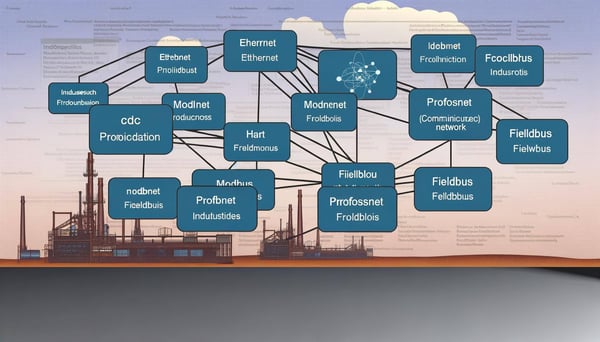
Fundamentals of MQTT/Sparkplug B
In the world of industrial automation and IoT, communication protocols play a pivotal role in ensuring seamless interaction between devices. Among the myriad of protocols available, MQTT (Message Queuing Telemetry Transport) and its derivative, Sparkplug B, have emerged as leading standards, particularly in the realm of industrial IoT (IIoT). This blog post will delve into the fundamentals of MQTT and Sparkplug B, exploring their architecture, benefits, and applications in the industrial sector.
Understanding MQTT: A Lightweight Messaging Protocol
MQTT is a publish-subscribe-based messaging protocol designed for lightweight M2M (Machine-to-Machine) communication. It was developed by IBM in 1999 to enable telemetry data transmission over satellite or dial-up connections. The protocol's lightweight nature and low power consumption make it an ideal choice for IoT applications where bandwidth and battery life are often constrained.
The architecture of MQTT is based on a central broker and multiple clients. The clients publish messages to topics, and the broker is responsible for forwarding these messages to all clients that have subscribed to the respective topics. This decoupling of producers and consumers of data allows for high scalability and reliability.
Key Features of MQTT
MQTT's popularity in the IoT landscape can be attributed to its unique features. Firstly, it uses a simple and compact binary packet payload, which reduces network usage and makes it suitable for constrained networks. Secondly, it offers three levels of Quality of Service (QoS) - At most once, At least once, and Exactly once. This allows developers to choose the right balance between message delivery assurance and network bandwidth.
Additionally, MQTT supports persistent sessions, where the broker stores all subscriptions and missed messages for clients when they are offline. This ensures that no data is lost even when the client is temporarily disconnected. Lastly, MQTT uses TLS (Transport Layer Security) for secure communication, providing robust protection against potential cyber threats.
Introduction to Sparkplug B: Extending MQTT for Industrial Applications
While MQTT provides a robust framework for IoT communication, it lacks a standard topic namespace and payload definition, which can lead to interoperability issues in complex industrial environments. This is where Sparkplug B comes into play. Developed by Cirrus Link Solutions, Sparkplug B is a specification that defines a MQTT topic namespace, payload, and session state for industrial applications.
!https://images.byword.ai/EJ4rCHDGeIxaMyIpua6aSNa6iwgsojrXE7aenwFoxfGoSXhmA-out-0.png
Sparkplug B enhances MQTT by providing a well-defined, interoperable data format that ensures all devices, sensors, and applications can communicate effectively. It also introduces the concept of a 'state engine', which provides real-time connection status of devices, enhancing the overall operational visibility.
Key Advantages of Sparkplug B
Sparkplug B brings several advantages to the table. Firstly, it provides a standard topic structure and payload definition, ensuring seamless interoperability between different systems and devices. This eliminates the need for custom data parsers and translators, reducing system complexity and development time.
Secondly, Sparkplug B's state engine provides real-time status of all connected devices, enabling rapid detection and resolution of connectivity issues. This significantly improves the reliability and uptime of industrial systems. Lastly, by leveraging the lightweight and efficient MQTT protocol, Sparkplug B retains all the benefits of MQTT, including low bandwidth usage, high scalability, and secure communication.
Applications of MQTT and Sparkplug B in Industrial Sector
MQTT and Sparkplug B have found widespread adoption in the industrial sector, particularly in IIoT applications. They are used in a variety of scenarios, ranging from remote monitoring and control of industrial equipment, to data collection from distributed sensors, to real-time analytics and decision making.
!https://images.byword.ai/5O8vqGMJMqqLLNpTUPjMShN5J1kwjK8PYk5Sm8fqJ5e3prQTA-out-0.png
For instance, in oil and gas industries, MQTT/Sparkplug B is used for real-time monitoring of drilling operations, enabling rapid response to any anomalies. In manufacturing, these protocols are used for machine-to-machine communication, facilitating automated control and predictive maintenance. In utilities, they enable smart grid applications by providing real-time data transmission between smart meters and control centers.
Conclusion
In conclusion, MQTT and Sparkplug B are powerful protocols that have revolutionized the way devices and applications communicate in the industrial sector. By providing a lightweight, efficient, and interoperable communication framework, they are paving the way for the next generation of industrial IoT applications. Whether you are a developer, a system integrator, or a decision-maker in the industrial sector, understanding these protocols is essential to harness the full potential of IIoT.



